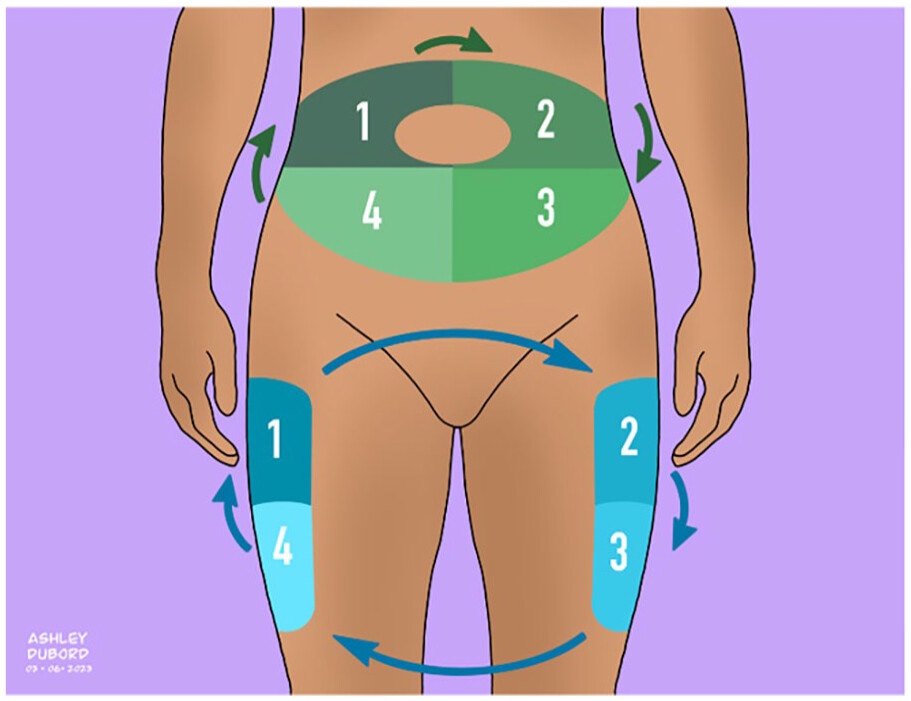Lipohypertrophy and Insulin: An Update From the Diabetes Technology Society

Original Articles:
- https://journals.sagepub.com/doi/10.1177/19322968231190408
- https://journals.sagepub.com/doi/abs/10.1177/19322968231187661
- https://journals.sagepub.com/doi/abs/10.1177/19322968231186626
What is lipohypertrophy?
Lipohypertrophy (LH) is the increased amount of fatty tissue underneath the skin caused by injecting or infusing insulin over time. It is very common but frequently not recognized by a person with diabetes and even their doctor or nurse. The simplest way to check for LH is to examine injection sites although occasionally ultrasound can also be used. Risk factors for developing LH include not moving the injection sites around (i.e., not alternating different arms or legs or areas on the abdomen), reusing needles, and using insulin straight out of the fridge. LH can also be unsightly.
Why is it important to recognize lipohypertrophy?
Injecting insulin into areas with LH stops the insulin from being absorbed consistently leading to erratic changes in the level of insulin in the blood.This makes glucose control more difficult and can lead to wild swings in glucose levels which is very frustrating and potentially dangerous.
How to prevent lipohypertrophy?
Remember to rotate injection sites and let the insulin come to room temperature before injecting! Change the needles often! Most importantly, ask your doctor or nurse to check your injection sites regularly.

